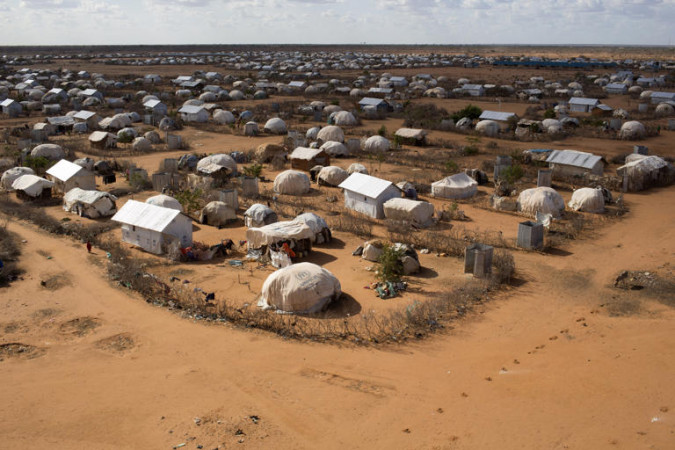Refugees from Kenya return to rebuild Somalia

In November 2016, when Abdullahi Ali Farah landed in the Somali port city of Kismayo after 22 years of living as a refugee in northeastern Kenya, he was afraid and hopeful at the same time.
“I was excited about the freedom and prospect of finally returning to my motherland but at the same time I was afraid of the danger and insecurity,” he said.
Five months after, those fears faded away as he settled in and started interacting with the locals. “Life was normal,” the 36-year-old man said. “I had not seen all the violence and negative news stories I used to watch in the media.”
Farah was born in a village near the border town of Dobley in Somalia’s lower Jubba region. In 1994, his family fled the country because of the civil war and he grew up in the Dadaab refugee camp in neighbouring Kenya.
Dadaab, a complex settlement consisting of three camps – Ifo, Dagahaley and Hagadera – was first established in 1991 to temporarily host some 90,000 Somali refugees fleeing the civil war which began that year. But over the years, it has expanded to more than three times its capacity and became one of the world’s largest refugee camps – hosting up to half a million people at one point in 2011.
Currently, the camp is home to more than 200,000 refugees. A vast majority, 96 percent, according to the UN Refugee Agency (UNHCR), are from Somalia but there are refugees from elsewhere including Ethiopia, Uganda, South Sudan, Burundi and other countries.
Life in the camp is difficult due to a lack of proper shelter as well as inadequate food and water, current and former residents say. The Kenyan government restricts refugees from leaving the camp.
“Dadaab became our home but I never felt free when I was there,” he told Al Jazeera. “I am grateful that I got an asylum after fleeing my country and got the opportunity to go to school but the camp was just like an open prison with no rights to work and freedom of movement.”
Voluntary repatriation
For 30 years, many refugees have lived in camps, unable to integrate into Kenyan society due to Kenya’s strict encampment policy and unable to return to Somalia due to insecurity.
Nevertheless, some decided to risk it all and go back to areas in Somalia that are deemed relatively safe including Kismayo. Since 2014, the UN Refugee Agency has assisted more than 80,000 Somali refugees in returning to Somalia.
Back in Somalia, there is limited access to basic services including healthcare. More than two-thirds of the country’s 15 million people are under the age of 30 but just as many of them are jobless. Somalia has one of the highest youth unemployment rates globally, according to the International Labour Organization.
But many young and educated returnees from Dadaab like Farah have found jobs to fill existing skill gaps and contribute to their country’s development. “When I first came to Kismayo, I met so many friends and schoolmates from Dadaab,” he said. “Most of them university graduates who came back to find jobs in Somalia.”











